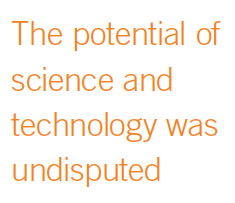A Plus ça Change Feeling on European Pharma
Pharmaceutical Executive
Looking back at the agenda of a 1985 EFPIA conference demonstrates that, three decades on, the European drug industry is still seeking a pill for its own ills.
The last 30 years has extravagantly proved how effective drug companies can be in conceiving, developing, and marketing pharmaceutical innovations. Since the 1980s, the range of medicines has been revolutionized. But in striking contrast to this ingenuity, the European biopharmaceutical industry has not shown itself so capable of designing a therapy for its own predicament. From three decades ago, a never-before-published report on a strategic industry meeting reveals some uncomfortably familiar themes-and even more uncomfortable unanswered questions.
Chance and this spring’s gales blew the document in through this columnist’s window, and its author-a respected journalist-has given me permission to quote from it (although the journalist prefers to remain anonymous). The report shows vividly how the same conflicts over prices, regulation, and political strategy that bedevil today’s drug firms were the leading issues at a time when most of today’s pharmaceutical executives were still students, or even unborn.
“The Challenge of Medicines in a Changing Society” was the title of the annual conference of the European Federation of Pharmaceutical Industry Associations (as the initials EFPIA stood for before the group changed its name to its current more inclusive form) in May 1985. As the report notes, the high-level exchanges at the meeting included “it is not only medicines that are doing the challenging: society, changing or not, is challenging medicines and the industry that makes them.”
Great potential
The potential of science and technology was undisputed: French health minister Edmond Hervé praised recent clinical trials on an anti-malarial vaccine. Nobel Prize winner Michael Perutz recounted his molecular-biology-based approach to treating sickle-cell anemia.
West Germany’s (yes, it was that long ago!) economics affairs minister Rudolf Sprung stressed his government’s interest in sophisticated biotechnology-derived medicines.

And Pierre Joly, the boss of Roussel Uclaf and president of the French drug industry association, then called SNIP, eulogized Galien, Pasteur, and Mendel as predecessors of the “European therapeutic tradition” that the pharmaceutical industry was now driving forward.
But “discussion of the heady prospects did not induce unqualified euphoria,” notes the report. “Exhilaration flickered and all but died in the face of the preponderantly harsh appraisal of the distance separating current reality from future achievement.”
Great obstacles
Economics topped the list of obstacles from industry’s perspective. Governments do not appreciate the industry’s value or promote its development, and instead jeopardizes its research capacity with downward pressure on drug prices in short-term bids to contain healthcare costs, complained Heinz Hannse, the boss of Schering, and president at the time of EFPIA.
Governments and society fail to recognize the need for mutually acceptable relations with the industry if research is to flourish, insisted Ron Wing of Sanofi UK.
Over-regulation, too, came in for industry criticism. Hannse cited tighter controls on testing, clinical trials, drug information, and intellectual property rights as factors stifling progress. Bill Duncan, head of ICI’s pharmaceutical division, demanded: “What hope is there of companies backing research if, on top of the intrinsic uncertainty, they are faced with additional risks deriving from incoherent government policies and an unstable regulatory environment?”
And political obstacles ranged from the “widespread tendency to seek a ‘soft target’ for health budget cuts” to a lack of vision: “Politicians, repeated the industry leaders, must be farsighted enough to see that the long-term advantages of allowing innovative products onto the market will outweigh the short-term costs.”
Politicians were equally aware of regulatory constraints, the report continues-“but favorably rather than unfavorably.” Hervé “spoke warmly of the WHO (World Health Organization) essential drug list, tighter product information requirements, and education to limit abuse and misuse of drugs.” Sprung “enumerated the criticisms made of the industry for stimulating overuse and for inadequate quality, safety, and efficacy … and did not find the time to rebut the criticisms.”
Austrian health minister Kurt Steyrer urged “adequate safeguards for patients in clinical trials.” And Eolo Parodi, the member of the European Parliament in charge of legislative proposals for pharmaceuticals, “urged better prescribing practice and suggested that R&D should be ‘directed’ to correspond to ‘the correct’ health needs of populations.”
On economics, the politicians coincided in their insistence on finding balance between industry aspirations and “the overpowering need” to control health budgets. And one of the key policy principles they enthusiastically espoused was support for parallel importing.
“In the opinion of the Federal Government,” said Sprung, “neither safety nor any other reason suffices to justify statutory measures to make the importation of pharmaceuticals more difficult. The government views parallel imports as an important incentive to competition, which can also contribute to efforts against excessive price demands at home.”
Great ambitions
As the journalist ruminated after all this, “What prospects are there for progress in such circumstances? Will the industry be able to convince European governments of the merits of its case?”
The journalist’s report concludes by quoting a challenge that Ivor Boden, the boss of Squibb Europe, threw down at the end of the meeting: “We have heard the industry restate the same objectives at repeated meetings of this sort. Is it not time that EFPIA formulates specific policies of how it should move toward achieving them?”
Fueling new discussion?
Few of the individuals from those days are still around, and Roussel Uclaf, Schering, and ICI have been subsumed into other industrial configurations. But in early March of this year, senior figures from Europe’s pharmaceutical industry and from national health ministries gathered in Brussels in an adventurous attempt to explore how they might work together in a new collaborative format. And their spring-like intention was to seek new common understandings on issues such as payment models for high budget impact medicines, access to and availability of medicines, and effective competition in the pharmaceutical market.
A solution at last to some of these decades-old questions? Not entirely, it would appear. The heady agenda for this ambitious encounter, designed to give substance to a series of similarly high-level meetings between drug industry bosses and politicians, proved just too challenging. Elaborate draft papers that had been prepared for the meeting on each of these hot-button issues were not even discussed.
Even more strikingly, questions were raised by key participants over whether this forum was even the right way of moving ahead. There was, in effect, no outcome-and no attempt is to be made to resume the talks until the autumn-or even until 2019.
Plus ça change indeed.
Reflector is Pharmaceutical Executive’s correspondent in Brussels
